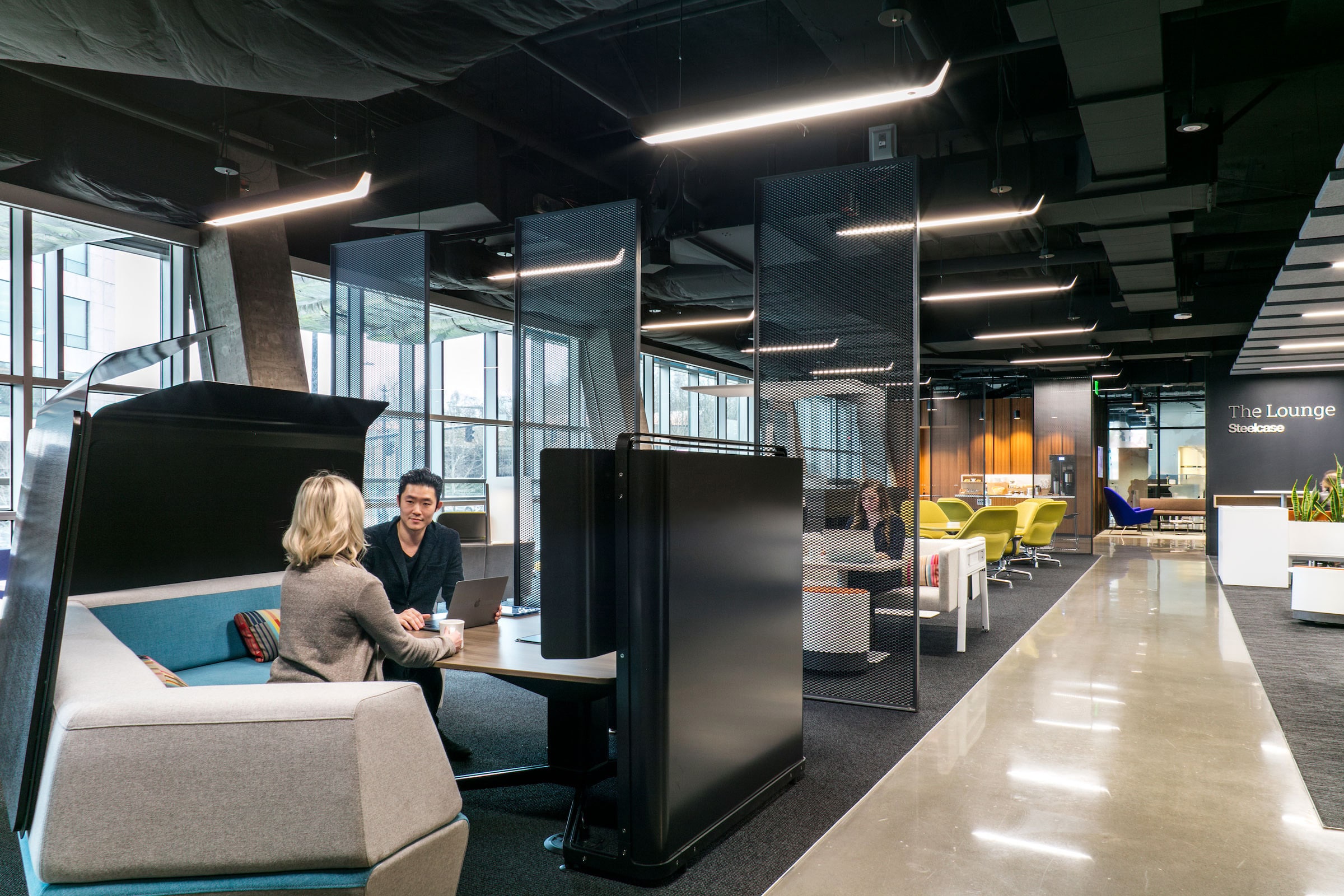It’s time to rethink our daylighting design strategies.
As design professionals, we all want to create buildings that embody both form and function and sustain well beyond ourselves for generations to enjoy. Although we can meticulously curate and produce the structural designs, flow, and raw materials to create stunning, sustainable works of architectural art, all of our hard work is wasted if we don’t have quality lighting. The lighting strategies we employ in our designed spaces are what visually interpret our work, ultimately defining the experiences we have inside them.
Daylighting is an easy decision to make when it comes to sustainable lighting design. However, daylighting design and strategy is a complex decision-making process that significantly impacts the aesthetics, experience, and cost of your designed space. As a natural lighting company, our team at lumenomics is dedicated to helping architects, owners, and builders design and build efficient, beautiful spaces for occupants. Navigating the lighting design process unaided can negatively impact the final result of your design. That’s why we developed our Daylighting Roadmap to guide our design process.
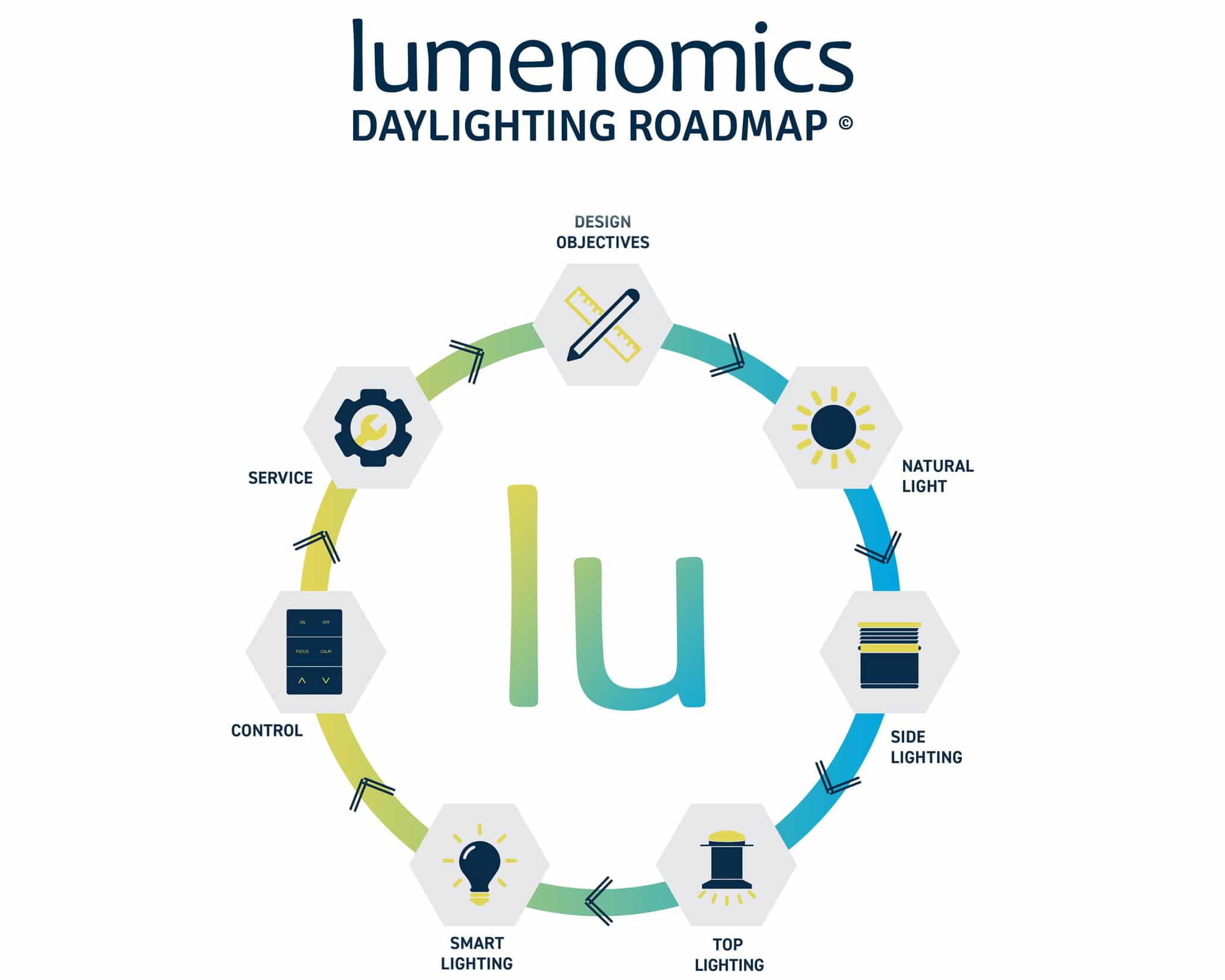
Our Daylighting Roadmap is designed to help architects, design-builders, and owners to navigate the process of designing an efficient and effective lighting system that complies to code and starts with natural light. Image courtesy of lumenomics
Begin with Design Intent
The first and most important stop on our road map is design intent. Every daylighting design must begin with identifying the occupants’ needs. Ask yourself—who will use the space? How will they use it? When will they use it? Centering the utility and functionality of the interior in your lighting design is what separates an average design from an exceptional one.
The design intent should be identified separately for each space within a built environment. Consider, for example, a school. Within a school, the utilities of a gymnasium significantly differ from those of the classroom. Your daylighting strategy must be tailored to each of these unique circumstances.
For a classroom, the goal is to optimize student performance in learning, studying, and test-taking. In regards to lighting, this goal is achieved through ambient, natural light with dimmable features while maintaining views to the outside—all factors scientifically proven to increase cognitive performance, reduce stress, and boost health and well-being. When we look at a gymnasium, we are faced with a space that has entirely different functionalities and logistics. Tall ceilings increase the amount of light needed, and longer operating hours for after school events mean supplemental electric light will be required.
Before developing lighting solutions, you must identify the challenges faced by your individual spaces. Examining these factors during the concept development stage of a project is vital in ensuring the success of your design.

Before and after: When retrofitting this manufacturing facility in Columbus, Ohio, we defined the need for daylight to connect the employees to the outdoors, as well as the opportunities to reduce energy consumption with electric lighting. By utilizing existing skylights, we maximized that amount of natural light in the space, using electric light to fill in the last remaining gaps and maintain a consistent light level. By installing occupancy and photometric sensors, the electric lights adjust automatically with fluctuations in natural light and turn off completely when the facility is not in use, achieving all our objectives defined in the design intent. Photos courtesy of lumenomics
Natural Lighting First
What other construction materials are freely available, cost nothing to use, and last 7 to 8 billion years? Natural light is your best friend and the perfect starting point for performance-driven lighting designs. When we say perfect, we mean it. Being full-spectrum, natural light’s perfect CRI (color rendering index) score of 100 means the truest visibility of colors in your designs.
Full-spectrum doesn’t just affect occupants’ color perception but also their moods and emotions within the space. Access to natural light allows occupants to remain in sync with their circadian rhythm, which elevates moods, increases energy, and improves their health and well-being. Best of all, it’s free. Forever. Every day you’ll light your space and you’ll never ever get a bill from the sun. Why use anything else?
Sustainable designs should always begin with seeking out every opportunity with natural light first. That’s why on our road map, after identifying design intent, we dive into finding every natural light opportunity from the tops and sides of buildings. This means creating daylight models specific to the location and weather conditions of your design to project the light level you can achieve through daylighting.
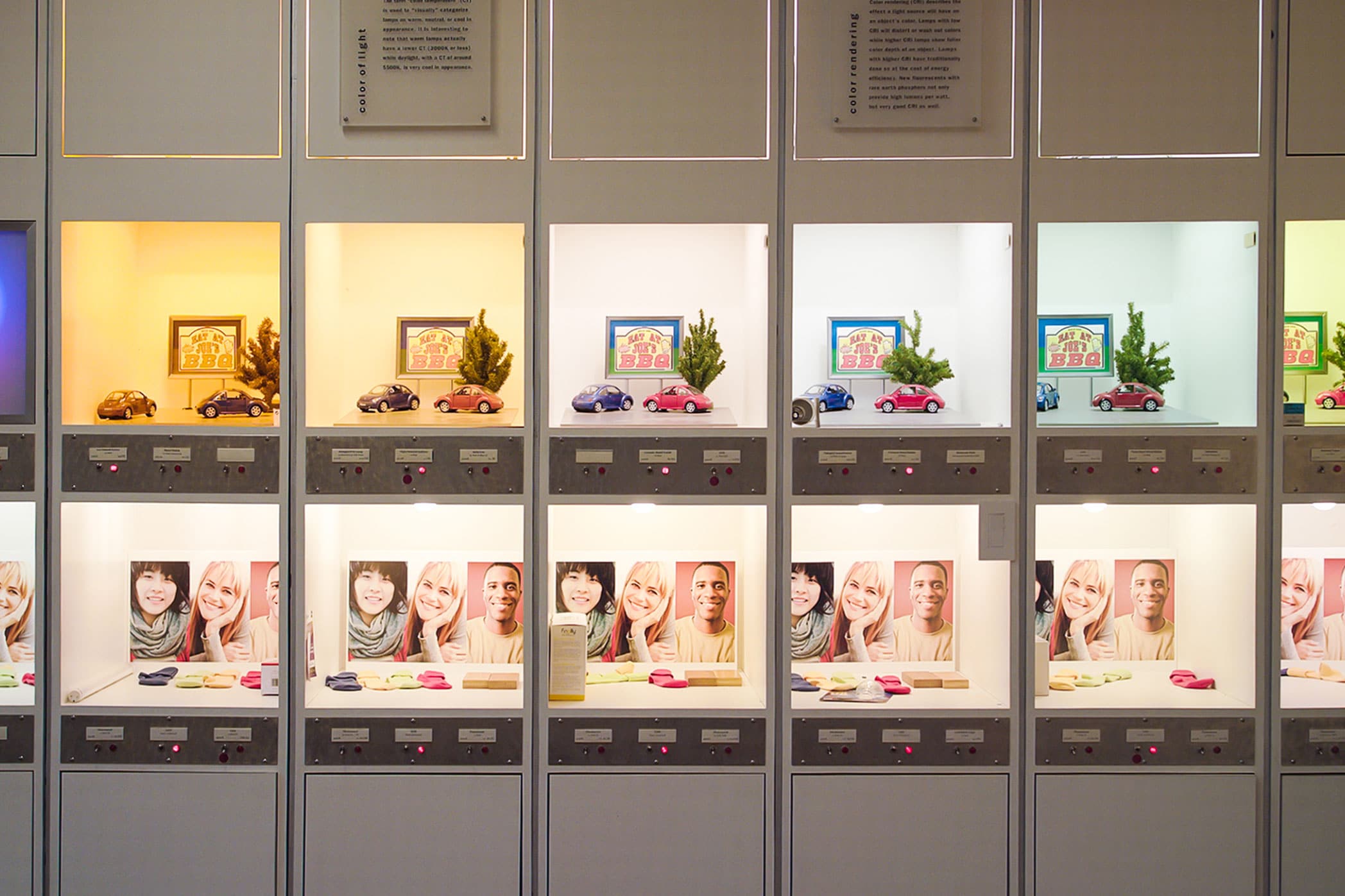
This display at the Lighting Design Lab in Seattle, Washington shows the effects of different types of lighting on the color renderings of objects. Photo courtesy of lumenomics
Sustainable Solutions for Every Situation
Side lighting is the most impactful lighting tool in your design. Although utilizing windows and openings on the sides of buildings can accomplish a significant portion of your daylighting needs, mitigating their negative impacts like glare and heat gain/loss is incredibly important to keep in mind.
What most miss in this stage is that these negative impacts can be capitalized upon. Factors such as the window glazing and a roller shade fabric’s solar performance can be used to pinpoint a perfect solution that reflects light and solar heat gain and reduces glare while still allowing views to the outside.
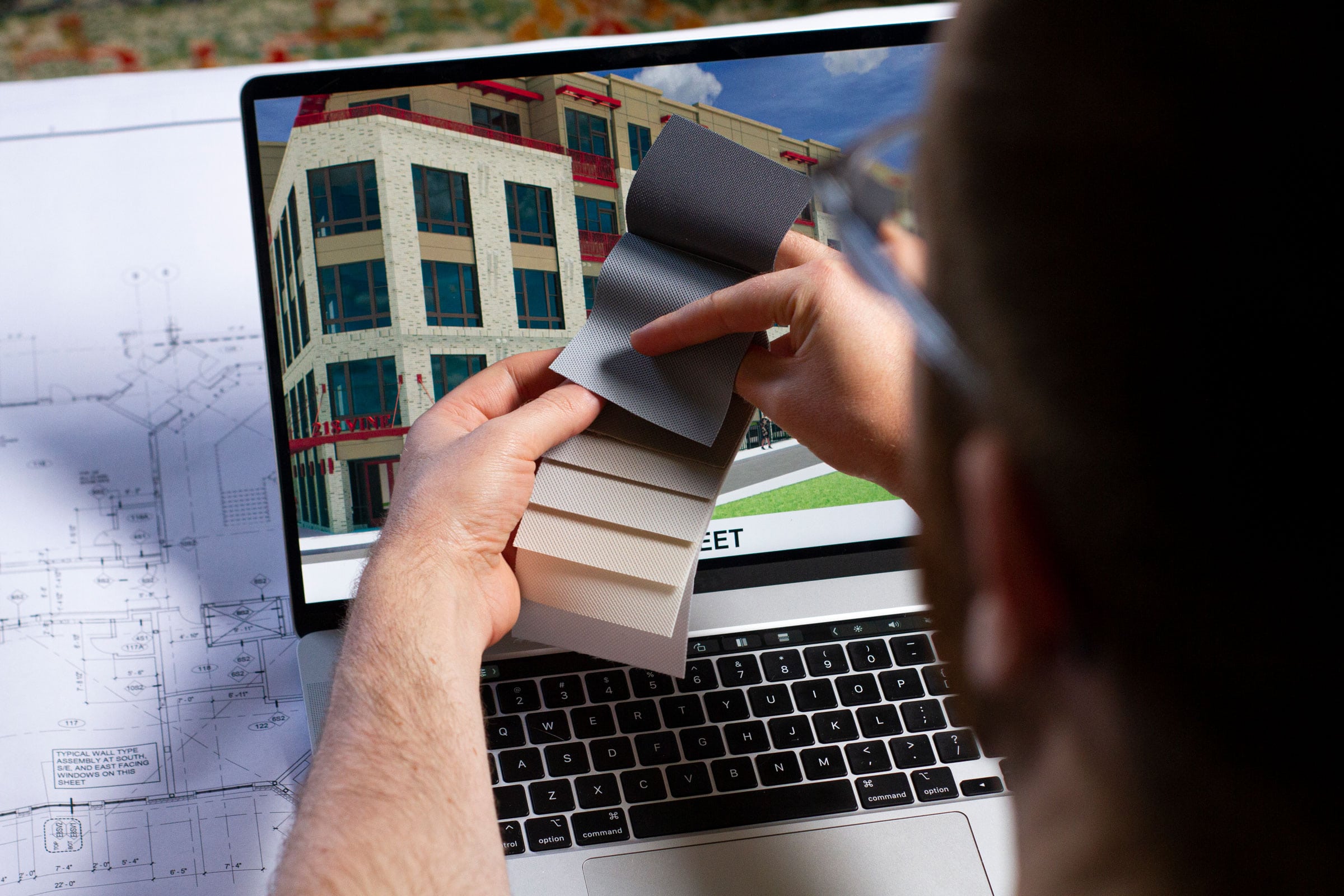
With so many window treatments to choose from, you don’t have to sacrifice style for efficiency. Photo courtesy of lumenomics
Automated window covering systems provide a multiplicity of options that can be fine-tuned to provide the perfect solution. With a focus on the performance of your window covering system, your side lighting solutions can also help you towards LEED, WELL, and other green building accreditations, contributing in various credit categories.
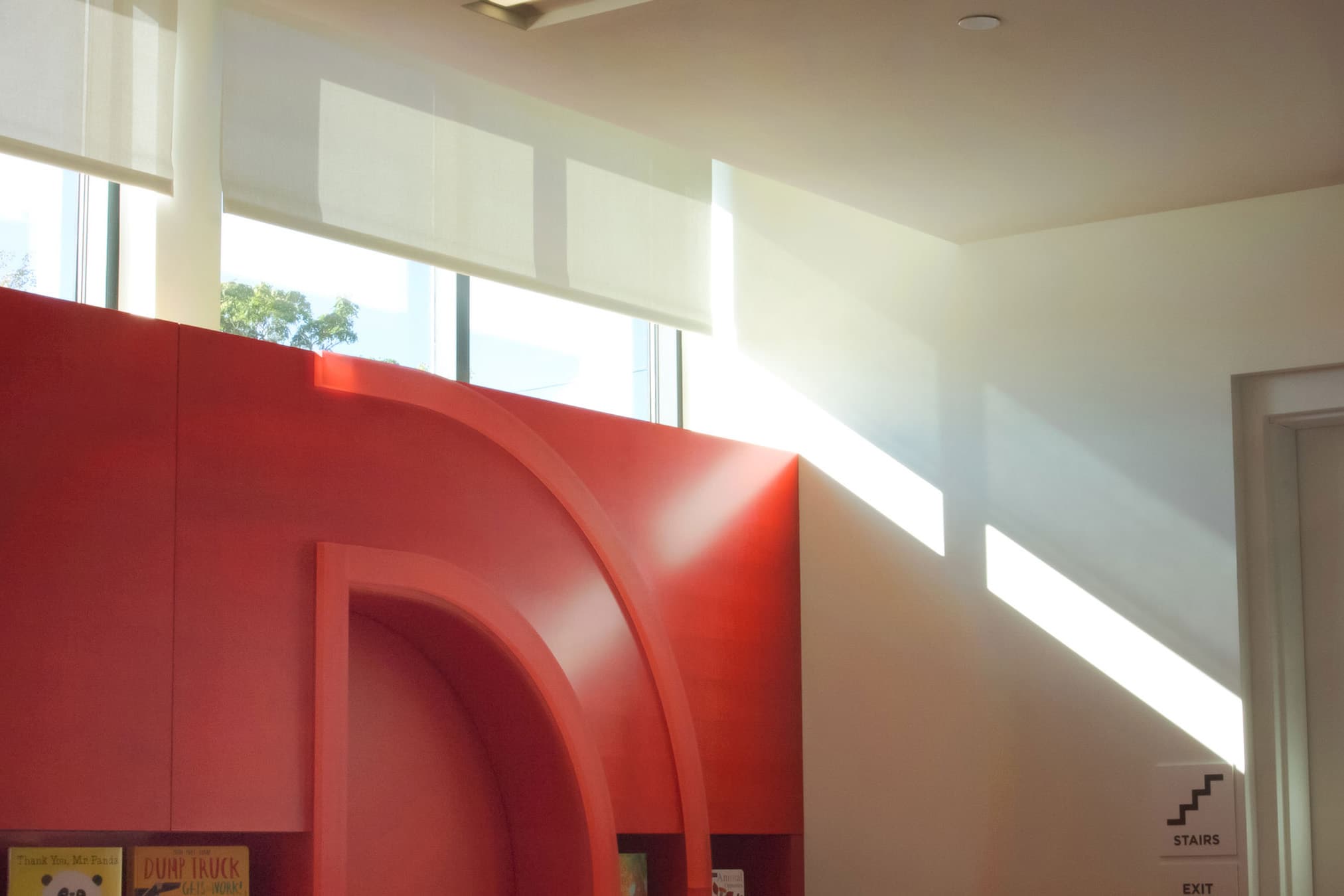
Automated shades with white reflective fabric at this library in Columbus, Ohio, allow control over glare while mitigating heat gain. Photo courtesy of lumenomics
For top lighting, products such as Solatube Tubular Daylighting Devices (TDDs) allow natural light to be funneled through the roof, providing bright, constant, and evenly distributed lighting in even gray and rainy environments such as the Pacific Northwest.
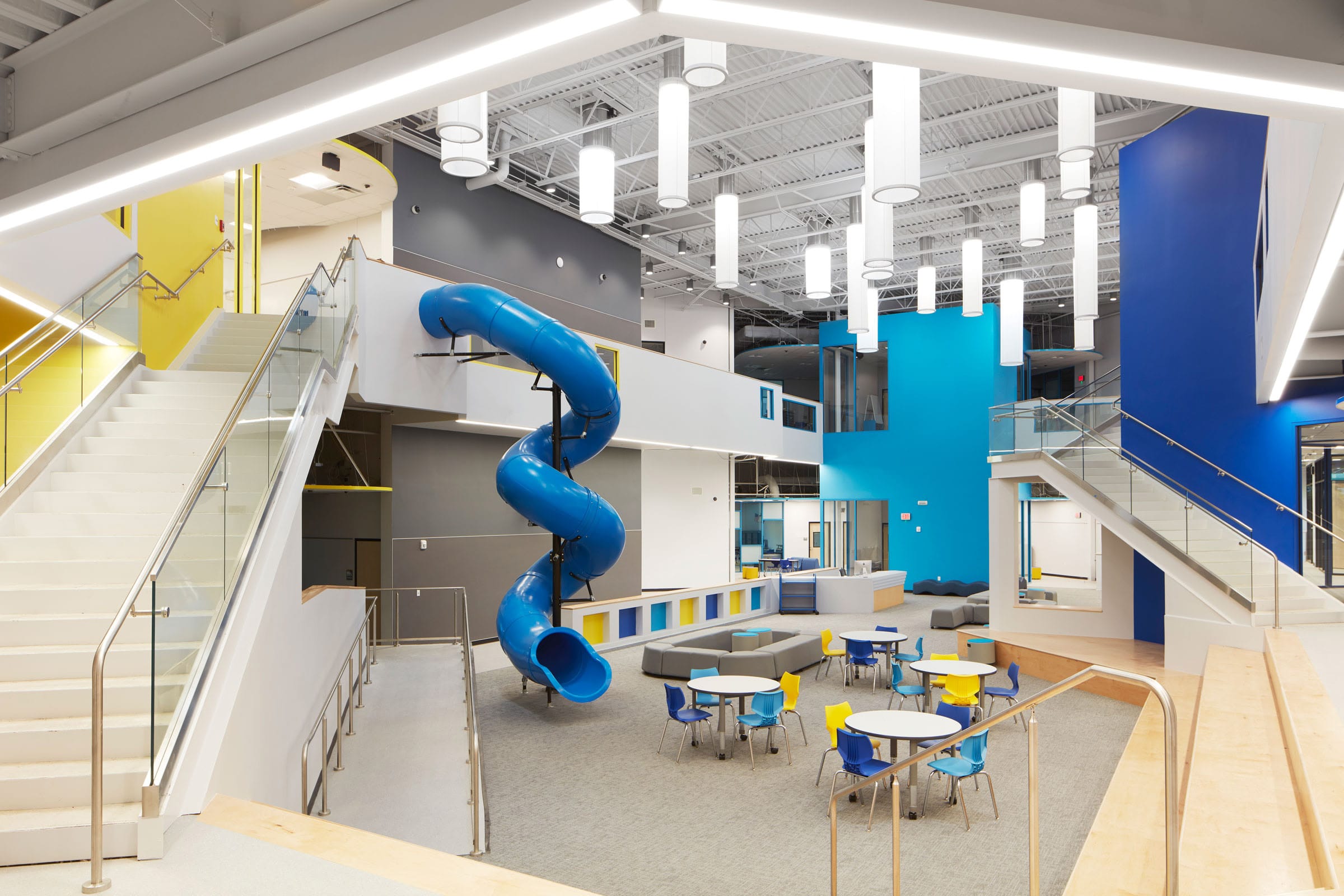
Tubular Daylighting Devices with custom diffuser fixtures like the ones here at this school center in Texas can bring natural light from outside to the inside where students learn and play—combining both form and function. Photo courtesy of Solatube International, Inc.
But what if you are designing a tower with interior space that’s hundreds of feet below the roofline? Fiber-optic Daylighting products, like Parans, can absorb and pump that sweet full-spectrum sunlight into a building via fiber optic cables up to 30 stories down when direct sunlight is available.
Prioritizing sustainable natural lighting solutions like these allow for continual, controllable daylighting that mitigates glare and solar heat gain and enhances your design.
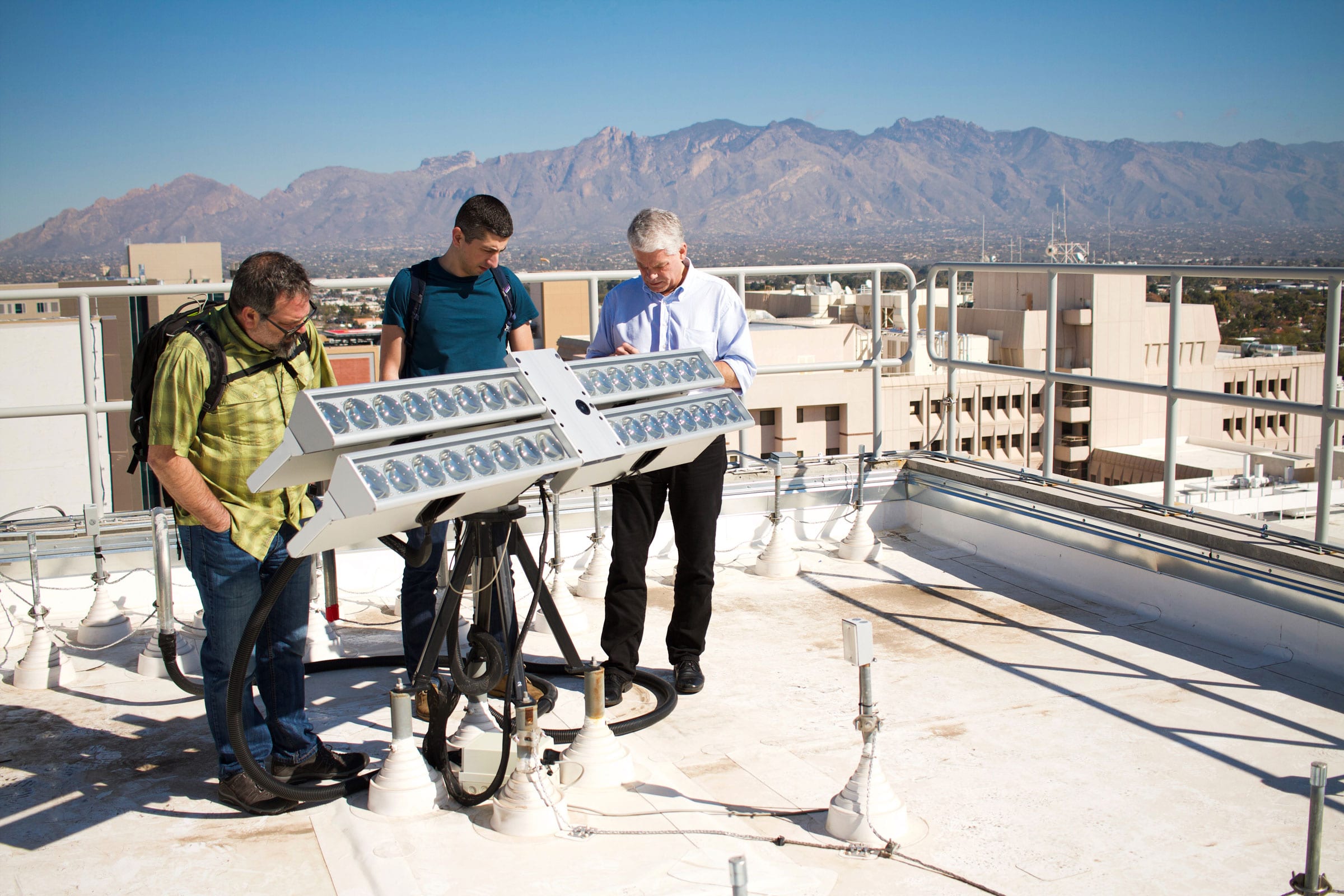
Modular, intelligent Parans collectors sit on the roof of a nine-story building in Tucson, Arizona. During the day they follow the sun and collect sunlight to send to the basement below via fiber optic cables. Photo courtesy of lumenomics
Filling in the Gaps with Smart Lighting
If you haven’t caught on yet, we’re slightly obsessed with natural light. However, even we know that it’s not available 24/7 and can’t address all your design needs. At this point on the road map, smart lighting is the next step. Smart lighting should exist only as a supplement to natural light and work in sync with your daylighting solutions. A truly occupant-centric smart lighting system should mimic the natural lighting pattern through tunable and dimmable LED fixtures to reinforce occupants’ circadian rhythm, with meaningful control systems to ensure ease of understanding and use for occupants.

Tunable and Dimmable linear suspended pendant LED’s allow electric light to mimic the color temperature of the sunlight throughout the day. On the left, the cooler lighting temperature mimics daylight and boosts alertness and efficiency, while on the right, warmer colors reflect sunrise and sunset that calms and relaxes occupants. Photo courtesy of lumenomics
Connect and Manage
The final stops on our road map are control and service. With the infrastructure of the lighting designed, now you must consider the user experience.
Control requires the integration of side lighting systems, top lighting systems, and smart lighting systems through sensors and networked lighting controls. This system should prioritize the use of natural light and only turn on electrical light supplementally. It should be accessible from the building management system, allowing the facility manager to manage their daylight needs from a singular user interface. Integrating your systems ensures seamless facility management, simplified owner training for handoff, and easy diagnostics for any future issues. Sustainable buildings are built not just to occupy but to own and manage into the future. Designing for easy maintenance and low-cost upkeep is crucial to the success of the design, not to mention driving down ownership costs.
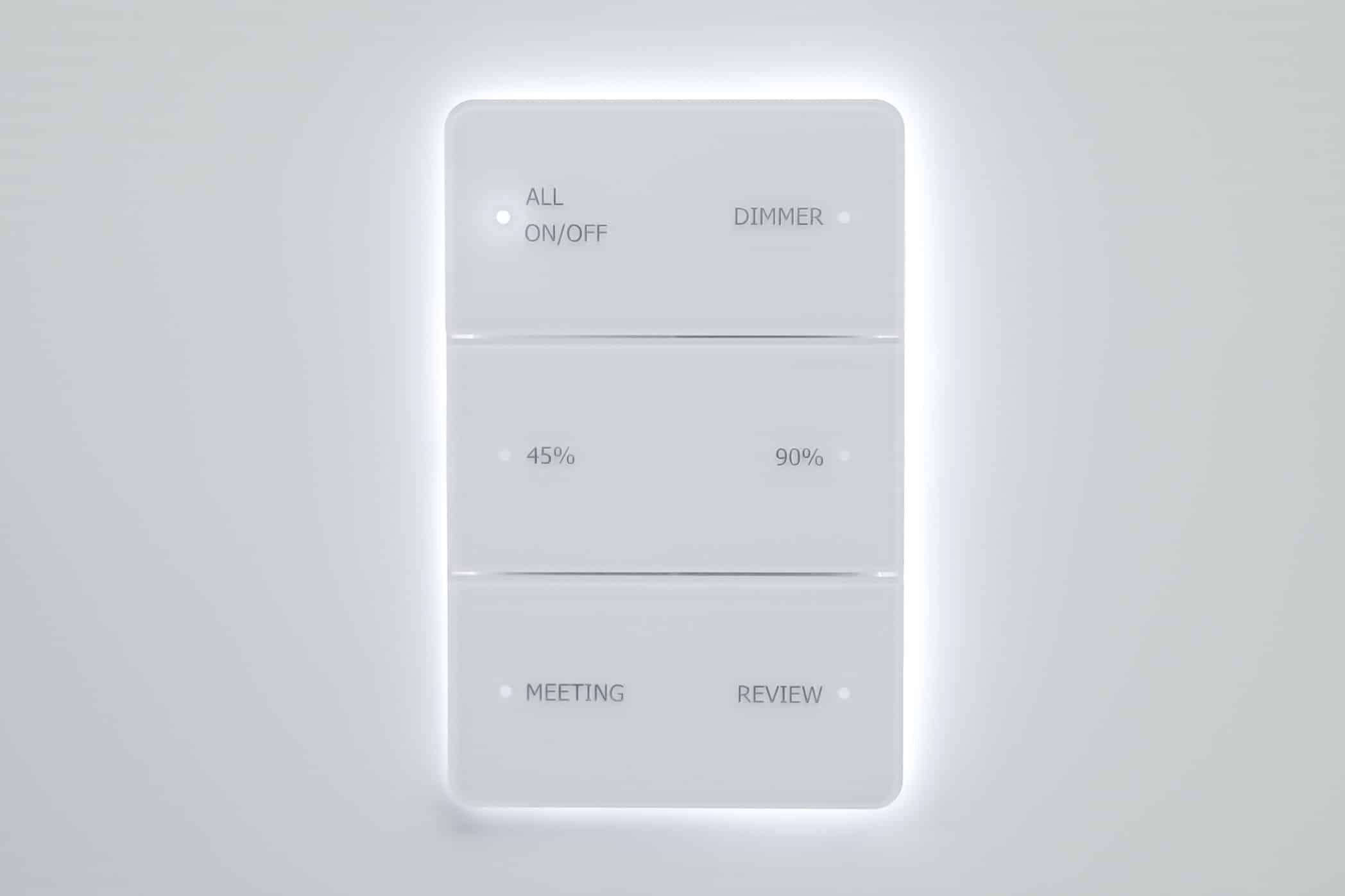
Customizable controls like these capacitive touch keypads allow comprehensive lighting programming while still enabling occupants to override controls and adjust the lighting in their space. Photo courtesy of lumenomics
Brighter, Better Buildings
The methodology to our road map has been constructed from years of experience confronting mistakes and errors made in lighting design. The simplest of oversights can create costly adjustments later on. Daylighting design is more than just using natural light—it’s the creation of a sustainable lighting system that delivers continually on the promise of the design intent for the building and its occupants.

